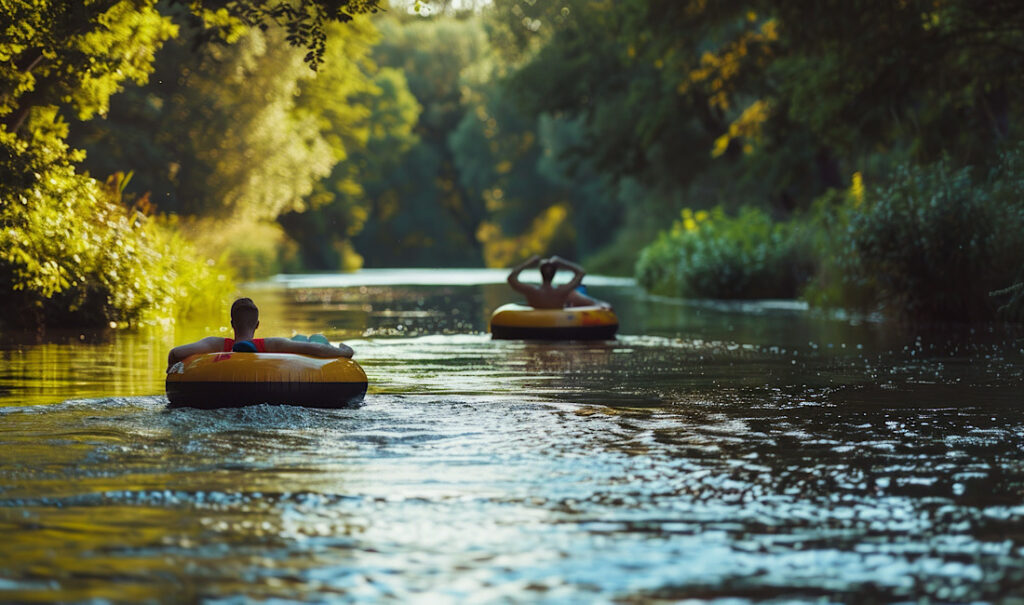
When it comes to beating the summer heat in the Colorado Rockies, tubing down Vail’s Gore Creek is one of the most refreshing and memorable experiences available. But to truly enjoy the ride—safely and seamlessly—requires more than just hopping into a tube. Locals know the nuances of the creek: when to go, where to float, and what to bring. Whether you’re a family looking for a relaxed afternoon or a seasoned adventurer seeking a new way to enjoy Vail in summer, tapping into this insider knowledge makes all the difference.
Ideal Tubing Conditions: When to Go and What to Watch
Gore Creek is a mountain stream fed primarily by snowmelt from the surrounding Gore Range. This natural origin means that water levels, temperature, and current strength can vary significantly from one week to the next.
For the best tubing experience, plan your visit between early July and early August. This is the sweet spot when the spring runoff has diminished, and the water is calm enough for safe floating. In this window, water temperatures are warmer, averaging in the low 60s Fahrenheit, and flow rates typically settle between 100 to 200 cubic feet per second—ideal for tubing without high risk.
By contrast, tubing during May or early June is discouraged due to fast currents and cold water temperatures that result from peak snowmelt. In these early-season weeks, Gore Creek’s flow can exceed 1000 cubic feet per second, posing dangers even for strong swimmers.
Key reminders locals follow:
- Check water conditions daily—the creek’s flow can change dramatically after storms.
- Start tubing in the early afternoon, when water levels are stable and thunderstorms are less likely.
- Avoid tubing 24–48 hours after heavy rain, as debris and fast-moving currents can make conditions unpredictable.
Local residents routinely monitor streamflow data and weather forecasts before tubing, knowing that good planning results in a safer and more enjoyable float.
Locally Preferred Launch Points and Exit Routes
Vail’s tubing scene centers around carefully selected segments of Gore Creek. While the stream itself runs for roughly 18 miles, locals focus on shorter, scenic sections through Vail proper, where access is easy and the current is manageable.
Top Float Routes Known to Locals:
- Ford Park to Lionshead Village
Duration: 45 to 60 minutes
Scenic Highlights: Alpine gardens, shady cottonwood trees, mountain backdrops
Entry/Exit Access: Paved paths, close parking, public restrooms nearby - Booth Creek to Vail Village
Duration: 2-3 hours
Level of Difficulty: Mild current with occasional swifter turns
Why Locals Love It: Less crowded, beautiful surroundings, perfect for experienced tubers
Routes to Avoid:
- Downstream of Lionshead: After this point, the creek becomes more rugged with limited access, large rapids, strainers, and other river hazards.
Locals also walk their chosen routes ahead of time, especially after recent rainfall. Debris like tree limbs and rocks can shift, creating new hazards overnight. Familiarizing yourself with the terrain before floating ensures a safe, smooth trip from start to finish.
What to Pack for a Safe and Comfortable Float
While Gore Creek may look peaceful, it still demands proper gear for a safe ride. Experienced locals never approach tubing without the right equipment. With swift water, rocky beds, and high-altitude sunlight, preparation can be the difference between a great day and an emergency.
Essentials to Bring:
- Durable river tube with mesh bottom and sturdy handles
- Closed-toe water shoes or river sandals with traction
- Life jacket (required for kids and non-swimmers; recommended for all)
- Sunscreen, SPF-rated and water-resistant, for high-elevation exposure
- Hat and sunglasses (with a retaining strap to prevent loss)
- Dry bag for phones, snacks, and small first aid supplies
What Locals Avoid:
- Tying tubes together, which reduces maneuverability in narrow or curving sections
- Carrying valuables, which often end up lost or water-damaged
- Drinking alcohol while tubing is unsafe and prohibited in Vail’s public waterways
These choices not only improve safety but also enhance the experience. Locals also understand that being alert and comfortable means more time enjoying the scenery and less time worrying about preventable issues.
Insider Takeaways Locals Use to Plan Their Gore Creek Day:
- Start early to avoid unpredictable afternoon storms and peak sun exposure
- Use Ford Park for easy access, parking, and facilities
- Avoid tubing if flow rates are above 250 cfs
- Skip ropes or connecting tubes; they’re more trouble than they’re worth
- Keep your trip under 90 minutes—longer floats often end in restricted or rougher zones
Gore Creek offers a snapshot of Vail’s natural beauty—fast-flowing, peaceful, and picturesque. But this beloved mountain stream isn’t just another attraction; it’s part of the lifestyle for those who live here. When you tube like a local, you discover a side of Vail that many visitors miss: tranquil curves, soaring peaks, and that unmistakable feeling of a true Colorado summer.If you’re ready to enjoy Gore Creek the way it was meant to be experienced, stop by American Ski Exchange in Vail Village. They’re not only your go-to for ski rentals in winter—they also carry warm-season gear, expert advice, and local insight to help you make the most of your day on the water.
